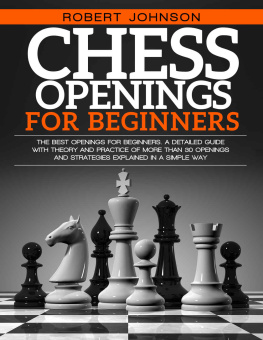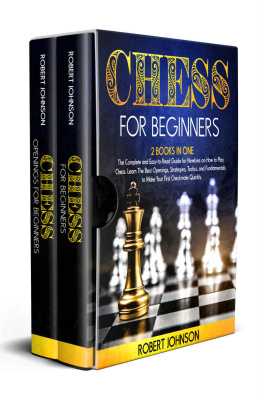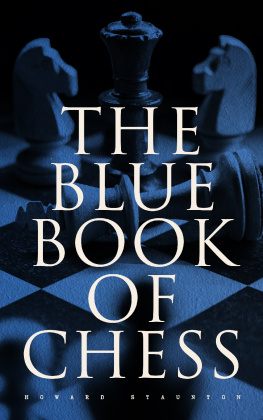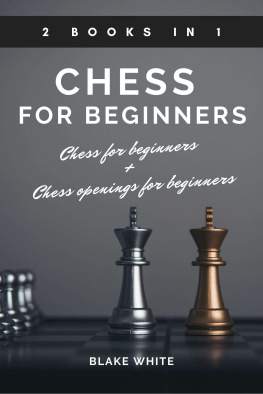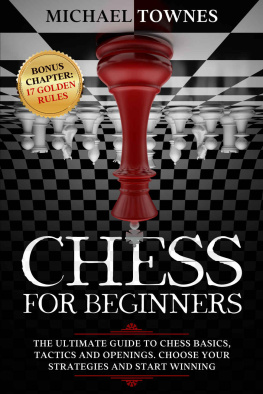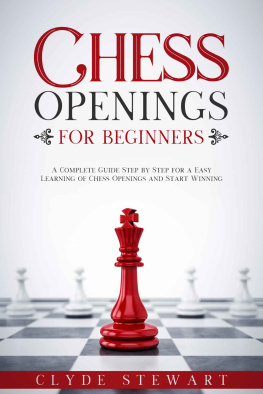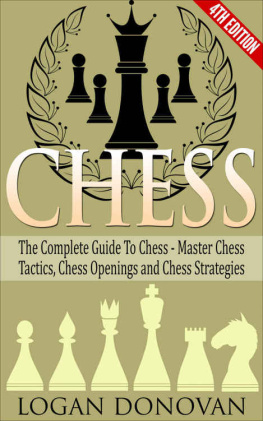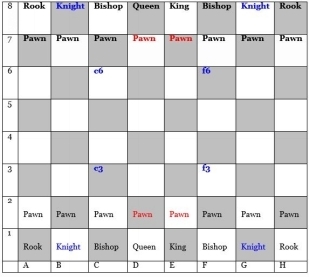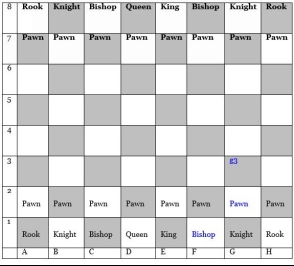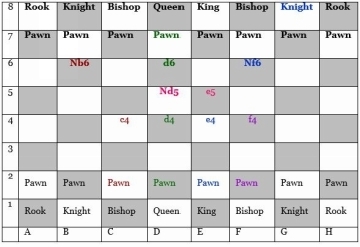Robert Johnson - Chess Openings For Beginners: The Best Openings for Beginners. A Detailed Guide With Theory and Practice of More Than 30 Openings and Strategies Explained in a Simple Way
Here you can read online Robert Johnson - Chess Openings For Beginners: The Best Openings for Beginners. A Detailed Guide With Theory and Practice of More Than 30 Openings and Strategies Explained in a Simple Way full text of the book (entire story) in english for free. Download pdf and epub, get meaning, cover and reviews about this ebook. year: 2021, genre: Children. Description of the work, (preface) as well as reviews are available. Best literature library LitArk.com created for fans of good reading and offers a wide selection of genres:
Romance novel
Science fiction
Adventure
Detective
Science
History
Home and family
Prose
Art
Politics
Computer
Non-fiction
Religion
Business
Children
Humor
Choose a favorite category and find really read worthwhile books. Enjoy immersion in the world of imagination, feel the emotions of the characters or learn something new for yourself, make an fascinating discovery.
- Book:Chess Openings For Beginners: The Best Openings for Beginners. A Detailed Guide With Theory and Practice of More Than 30 Openings and Strategies Explained in a Simple Way
- Author:
- Genre:
- Year:2021
- Rating:5 / 5
- Favourites:Add to favourites
- Your mark:
Chess Openings For Beginners: The Best Openings for Beginners. A Detailed Guide With Theory and Practice of More Than 30 Openings and Strategies Explained in a Simple Way: summary, description and annotation
We offer to read an annotation, description, summary or preface (depends on what the author of the book "Chess Openings For Beginners: The Best Openings for Beginners. A Detailed Guide With Theory and Practice of More Than 30 Openings and Strategies Explained in a Simple Way" wrote himself). If you haven't found the necessary information about the book — write in the comments, we will try to find it.
Do you want to sharpen your chess strength and learn the best openings and strategies to win your next games easily? If yes, then keep reading!
You already have the fundamentals of chess covered; its just that youre still having trouble finding the best opening and strategy that would work best for your games. Indeed, knowing the most effective openings and strategies could lead you to more wins in the future.
Finding the right strategy to go with when playing a game is not uncommon. Whether it be ball sports or chess, the right strategy can assure you a grand victory.
The How to Win Chess: Chess Openings for Beginners book has it covered for you in twelve chapters. It can help you grow more and help you discover yourself more as a chess player.
With this detailed and intricate guide, you wont have to constantly beat around the bush when attacking or defending your pieces anymore.
You will finally find the opening and the strategy best suited for you.
Heres a quick peek at what Chess for Beginners: Opening and Strategy has to offer you:
Opening Objectives
Opening Catalog
The Best Chess Opening for Beginners: Ruy Lopez, Italian Game, Sicilian Defense, French Defense, Caro-Kann Defense, Pirc Defense, English Opening, Alekhines Defense, Queens Gambit, Modern Defense, Kings Indian Defense, Kings Indian Attack, The Dutch Defense.
The Best Strategies for Beginners: Battery Attack, Discovered Attack, Discovered Check, Fork Attack, Pin Attack, Skewer Attack
Exercise For Beginners
More Chess Openings: Danish Gambit, Slav Defense, Vienna Game
Unusual Replies and Others
Learning from the Masters: Chess is a learning game, and you will find that you will make several mistakes along the way, but to truly get better, you are going to need to take the time to not only go through the games of masters but also to analyze them and think about why they made certain moves.
Additional Chess Openings: Damianos Opening, Latvian Gambit, Petrovs Defense.
Chess Strategy: Chess strategies are based on theoretical principles and permanent factors present in the position. It would be best if you used chess tactics to implement your strategies.
And so much more!
Try practicing the instructions written in this book, and with consistency, you will be able to gain immediate results and see growth with what you do.
The How to win at chess: Chess Openings for Beginners is your perfect guide in thoroughly learning, understanding, and mastering chess. It will help you find the great chess player inside of you.
Grab this book and click BUY NOW!
Robert Johnson: author's other books
Who wrote Chess Openings For Beginners: The Best Openings for Beginners. A Detailed Guide With Theory and Practice of More Than 30 Openings and Strategies Explained in a Simple Way? Find out the surname, the name of the author of the book and a list of all author's works by series.

